How are Attics Ventilated? (Types of Attic Ventilation Systems)
Attic ventilation is one of the most important things to get right in order to make sure your roof lives out its full lifespan.
Observing your roof's vents may not be the first thing on your mind when you step outside or venture into your attic. You might wonder what these vents are and why they matter. That's precisely why we've crafted this blog to shed light on this essential aspect of roofing: attic ventilation.
Attic ventilation is more than just an architectural detail; it's a crucial factor that significantly impacts the lifespan and performance of your roof.
In this article, we’ll go over:
Let’s get started!
Attic ventilation is a well-thought-out process that ensures the circulation of air within your attic space. This system involves the strategic placement of vents to facilitate the exchange of air, which serves various purposes in maintaining your home's overall health.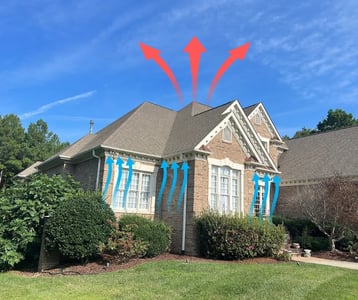
Here's how it works: Intake vents are typically located near the bottom of the roof, allowing fresh, cooler air from outside to enter the attic. Simultaneously, exhaust vents, situated near or at the top of the roof, enable warm, stale air to exit the attic. This continuous cycle establishes a steady flow of air, creating a well-ventilated attic space.
This seemingly simple process plays a crucial role in preserving the integrity of your roof and the overall health of your home.
Intake vents are strategically positioned at or near the lower part of your roof to serve a specific purpose in attic ventilation. Their placement is deliberate, aiming to usher in the coolest air available from the exterior environment. The rationale behind this design is grounded in the fundamental principle that hot air naturally rises.
By drawing in the coolest air possible, intake vents initiate the process of air exchange within your attic. As this fresh, cooler air enters the attic space, it displaces the warmer, stagnant air that tends to accumulate near the roof's highest points. This circulation ensures that the attic remains adequately ventilated and free from the adverse effects of heat buildup.
Proper placement of intake vents is vital, as it contributes to the overall efficiency of your attic ventilation system.
When it comes to selecting an intake vent for your attic, soffit vents often emerge as one of the most effective choices. Soffit vents are strategically positioned to allow air to flow into the attic from the underside of your roof's soffit. The soffit is the overhanging section of the roof that extends beyond the exterior walls of your home.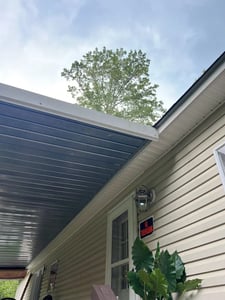
The unique advantage of soffit vents lies in their location—they introduce fresh air through the lowest point on the roof structure. This positioning ensures that the incoming air is at its coolest as it enters the attic. As the cool air circulates within the attic, it naturally warms up and rises. This process facilitates efficient ventilation by encouraging the warmer, moisture-laden air to exit through the exhaust vents, typically located higher up on the roof.
By initiating the ventilation process at the lowest point, soffit vents optimize the exchange of air within your attic. This helps regulate temperature and humidity, which is essential for preserving the health of your roof and the overall integrity of your home.
Another option for intake ventilation is the drip edge vent. However, it's worth noting that drip edge vents, while functional, may not be as efficient at introducing cool air into the attic compared to soffit vents. As a result, they are not typically the preferred choice for intake ventilation.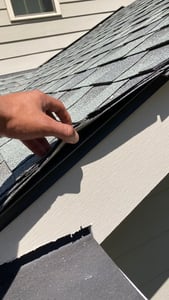
Drip edge vents are somewhat more challenging to install compared to soffit vents, and they are primarily used in situations where there is insufficient soffit space to accommodate other forms of ventilation. In such cases, the drip edge vent provides an alternative solution for achieving proper attic ventilation.
While not as efficient as soffit vents, drip edge vents can still contribute to maintaining a healthy attic environment by allowing some fresh air to enter. However, it's essential to consider the specific needs of your roofing system and attic space when choosing the most suitable intake venting method.
Exhaust vents play a crucial role in the attic ventilation system by allowing warm air to exit the roof effectively. To achieve optimal attic ventilation, exhaust vents should be strategically positioned at or near the top of your roof. This placement is essential as it facilitates the maximum expulsion of warm air from the attic space.
The primary purpose of exhaust vents is to create a pathway for the accumulated warm air within the attic to escape. As the sun heats the roof's surface or when your home generates warm air due to various factors like cooking or heating, this warm air tends to rise. Without proper ventilation, this warm air can become trapped in the attic, leading to a range of issues, including increased energy costs and potential roof damage.
By installing exhaust vents near the roof's peak, you create a natural mechanism for this warm air to exit. As it rises, it is drawn towards the exhaust vents, allowing a continuous flow of air that replaces the warm attic air with cooler outdoor air. This process helps regulate the attic's temperature, preventing it from becoming excessively hot and humid, which can contribute to various problems, such as premature shingle deterioration, moisture buildup, and reduced energy efficiency.
Ridge vents have gained popularity as one of the most effective and inconspicuous exhaust vent options for homes with ample ridge-line. These vents are favored for their ability to efficiently facilitate the release of warm air from the attic, thanks to their strategic placement at the highest point of the roof, where warm air naturally accumulates.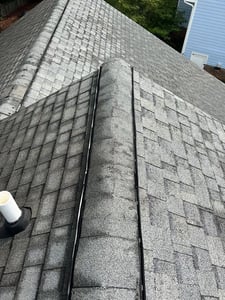
One of the key advantages of ridge vents is their unobtrusive design. Unlike some other exhaust vents that may protrude from the roof's surface, ridge vents have a low profile that blends seamlessly with the roofline. This discreet appearance not only enhances the overall aesthetics of the roof but also minimizes their visual impact on the home's exterior. Homeowners appreciate ridge vents for their ability to provide effective attic ventilation without compromising the roof's appearance.
Ridge vents work by creating a continuous ventilation pathway along the entire length of the roof's ridge. As warm air rises within the attic, it is drawn towards the ridge vent, where it exits the attic space and dissipates into the surrounding environment. This process promotes the efficient circulation of fresh, cooler air into the attic from intake vents, ensuring that the attic remains well-ventilated throughout the year.
Box vents, sometimes referred to as roof louvers, offer another viable option for effective attic ventilation, especially in homes lacking sufficient ridge-line for ridge vents. These vents provide a low-profile and inconspicuous means of facilitating the flow of air from the attic, ensuring proper ventilation without compromising the visual aesthetics of the roof when viewed from the front.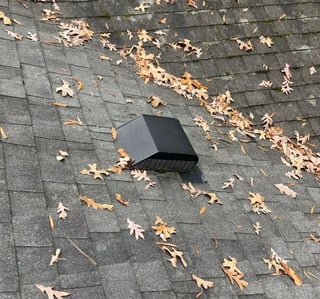
The design of box vents is straightforward yet efficient. They consist of small, rectangular structures installed on the roof's surface. These vents are strategically positioned to create an opening through which warm, stale air from the attic can escape. Box vents are typically installed near the roof's peak, allowing them to serve as effective exhaust points for the warm air that accumulates in the upper regions of the attic.
One of the significant advantages of box vents is their unobtrusive appearance. These vents are relatively low profile and do not draw significant attention to themselves, making them an appealing choice for homeowners who prioritize both functionality and aesthetics. Box vents are typically placed in areas that are not easily visible from the front of the house, ensuring that they do not disrupt the roof's overall appearance.
Gable vents are a distinctive type of attic ventilation system that provides an effective means of maintaining proper airflow within the attic space. These vents are strategically installed at the peak of the roof's gable, which is the triangular portion formed by the intersection of two slanted roof sections. Gable vents serve as exhaust points for warm air that accumulates in the attic, helping to regulate temperature and humidity levels.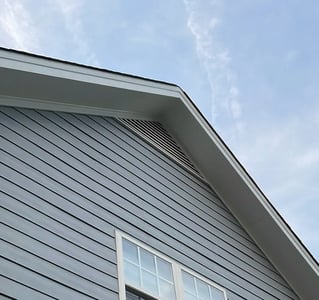
One notable advantage of gable vents is their placement. Unlike roof vents, which are situated on the roof's surface, gable vents are located on the exterior walls of the house, specifically within the gable ends. This positioning makes them an attractive option for homeowners who prefer not to have vents visible on the roof itself. Gable vents offer an alternative way to achieve effective attic ventilation while maintaining the roof's aesthetic appeal.
Gable vents come in various shapes and sizes, allowing homeowners to choose an option that complements the architectural design of their home. These vents can be rectangular, triangular, or even arched, offering flexibility in both function and appearance. Homeowners often select gable vents that align with the overall style of their house, ensuring that they seamlessly blend with the existing exterior.
For homes with limited options for roof vents or where other types of vents may not be practical, gable vents can serve as a reliable ventilation solution. They facilitate the circulation of air in the attic, preventing the buildup of heat and moisture that can lead to various issues, including roof damage, energy inefficiency, and mold growth.
Turbine vents, also known as whirlybird vents, offer an innovative solution for attic ventilation by utilizing the power of wind to create efficient airflow within the attic space. These vents consist of a rotating metal or plastic head that spins when exposed to wind, creating a partial vacuum effect that draws air out of the attic.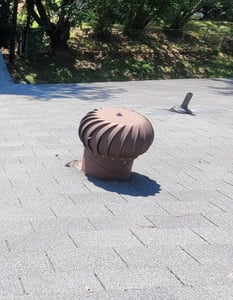
The operation of a turbine vent is straightforward. When wind blows over the roof, it flows into the turbine vent, causing the spinning head to rotate. This spinning action creates a low-pressure area inside the vent, which, in turn, pulls air from the attic space up and out through the vent. As the warm and moist air is expelled, it is replaced by cooler, fresh air drawn in through intake vents, maintaining proper attic ventilation.
One significant advantage of turbine vents is their ability to function without the need for electricity or mechanical components. They rely solely on the power of natural wind currents, making them an eco-friendly and cost-effective choice for homeowners seeking energy-efficient attic ventilation solutions. Additionally, turbine vents operate silently, which is a notable benefit compared to some mechanical ventilation systems that can generate noise.
Powered roof vents, also known as attic fans or attic ventilators, are an active attic ventilation solution designed to regulate temperature and humidity levels within the attic space. Unlike passive vents that rely on natural airflow, powered roof vents use electric fans or solar-powered mechanisms to actively expel hot and moist air from the attic and replace it with fresh outdoor air.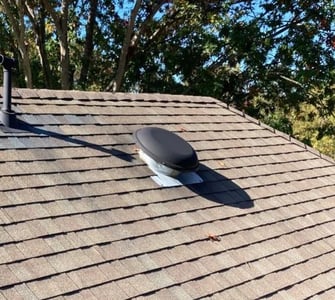
The operation of powered roof vents is relatively straightforward. These vents are equipped with one or more fans that draw air from the attic space and exhaust it outside through the roof. The fans are powered either by electricity or by solar panels, depending on the specific type of vent installed.
Attic ventilation is a critical aspect of maintaining a healthy and durable roof, and its importance cannot be overstated. Proper attic ventilation serves several essential functions that impact the longevity, energy efficiency, and overall well-being of your home. Let's delve into the key reasons why attic ventilation is so crucial:
Temperature Regulation: Your attic can become an oven during hot summer months if not properly ventilated. Without an effective means of expelling heat, the sun's radiant energy can cause the air in the attic to become stale and excessively warm. This trapped heat can raise the temperature of your roofing materials, leading to premature aging and deterioration of shingles. In extreme cases, excessive heat buildup can even compromise the structural integrity of your roof.
Moisture Control: In cold weather, warm air from inside your home can rise into the attic. Without adequate ventilation, this warm air can become trapped and condense on the cold underside of the roof. This condensation can lead to moisture accumulation, which can cause significant problems such as rotting roof decking, mold growth, and damage to the wooden frame of your roof. Over time, this can weaken the structural components of your roof, leading to costly repairs.
Energy Efficiency: A well-ventilated attic contributes to better energy efficiency in your home. During hot weather, proper ventilation helps prevent your attic from overheating. This, in turn, reduces the heat load on your home's interior and lessens the strain on your air conditioning system. In colder seasons, ventilation helps to maintain a consistent temperature in the attic, preventing ice dams from forming on the roof. Ice dams can lead to water infiltration and heat loss, impacting your home's energy efficiency.
Roof Longevity: Effective attic ventilation plays a pivotal role in extending the lifespan of your roofing materials. By regulating temperature and reducing excess heat, ventilation helps prevent shingle deterioration, warping, and premature aging. It also minimizes the risk of structural damage caused by extreme temperature variations and moisture-related issues.
Mold and Mildew Prevention: Proper attic ventilation helps keep humidity levels in check, reducing the likelihood of mold and mildew growth. Mold and mildew not only damage your roofing materials but also pose health risks to your household.
Attic ventilation is a fundamental element of roof maintenance and home comfort. It helps regulate temperature, control moisture, enhance energy efficiency, extend the life of your roof, and prevent issues like mold growth. Ensuring that your attic is adequately ventilated is an investment in the long-term health and performance of your home's roofing system.
On Tops Roofing has been helping Raleigh area homeowners understand and solve their attic ventilation problems since 1991! Whatever your roof requires, We’re on it!
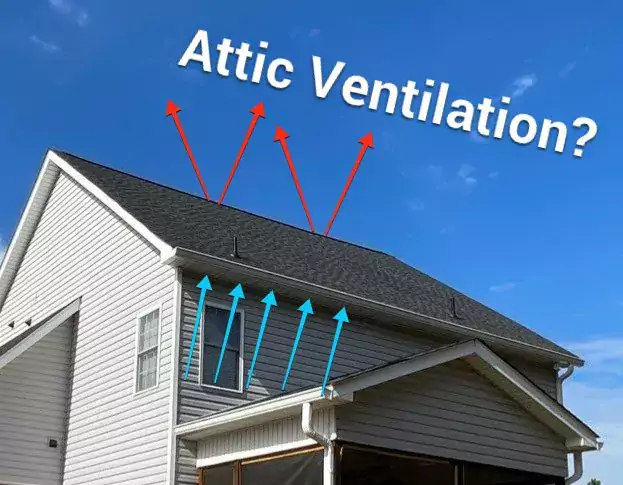
Attic ventilation is one of the most important things to get right in order to make sure your roof lives out its full lifespan.
.png)
When winter comes, it often brings with it some beautiful scenes. Trees become bare, creeks freeze over, and snow blankets the neighborhood.
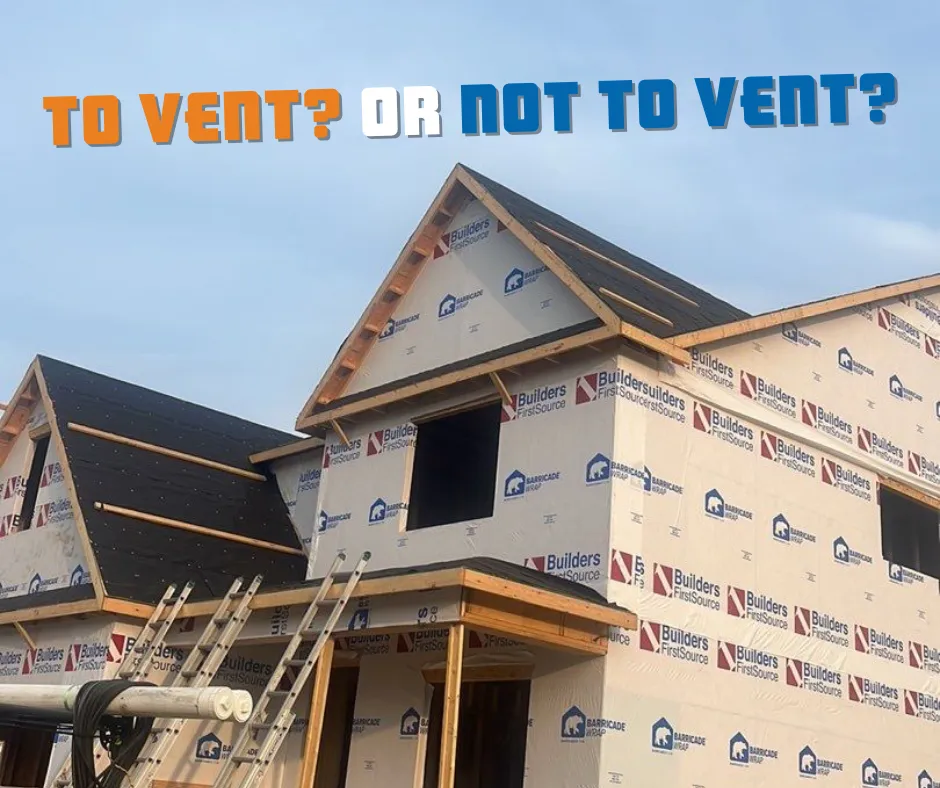
When it comes to taking care of your home, understanding the various components that contribute to its health and longevity is crucial. One of the...